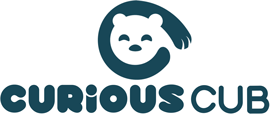Your child sees math all around them. Math isn’t something only done in school, it is a part of life. Intentionally bringing your child’s attention to numbers, shapes and measurement during daily activities will enable them to see the uses of math and its real life application. Additionally, research shows that children who have been exposed to math early on in life, are more likely to understand math concepts better. They also develop better problem solving, critical thinking and spatial awareness.
Many parents know the importance of reading in the early years, and math is just as important
Math is a universal language and there are several ways for you to expose your child to it at home.
4 math concepts to expose your toddler to
1. Counting
Research shows that exposing your child to number words early is beneficial even though your child might not be ready to count yet. Here are some ways you can teach your child to count
- Pointing and counting the pictures on a book, “I see two birds - one, two!” exposes them to the concept of one to one correspondence and before you know it, they will be doing it too.
- While giving them a snack, you might say, “Here are 5 makhanas - 1, 2, 3, 4 and 5” as you place them on the high chair tray one at a time.
- You can also count with your child as you climb up stairs, especially if you have a child who learns while moving.
- Line up your child’s stuffed animals and have them tap the head of each as they count them
- While playing peek a boo, invite your child to hide as you close your eyes and count. Soon your child will be ready to do the same while you hide - even if it means counting to 5!
2. Numbers
Bring your child’s attention to numbers around the house by going on a number hunt. Numbers are everywhere and used in many daily activities
- You can point to the clock, microwave, remote or phone to show them that there are numbers on items we use everyday. Soon enough your child will be able to find these on their own.
- Hide number cards around the house or in a sensory bin. If you hide in the house be sure to tape some in hidden locations like under a table, for your child to find when on their number hunt.
- When going up and down the elevator, see if your child can push the button to the floor you want to go to. Start of by pointing the floor and then inviting them to press it. After a few weeks, you can ask them to do so independently. Wait to see if they remember, if not, you can prompt them in doing so.

3. Shapes
Shapes are everywhere! Around 24 months, toddlers are capable of identifying basic shapes and matching them together.
- Bring your child’s attention to shapes in their environment by going on a shape hunt. Point out to the clock and say, “That’s a circle! Do you see another circle?” Similarly do this with other items around the house.
- Play a game where you call out a shape and your child needs to bring that shape to you. When they’ve brought a few shapes, you can line them up and talk about their similarities and differences.
- While driving outside, point out to signs and symbols on the road and talk about what they represent. How some signs are circles and some triangles.
- Cut your child’s sandwiches or pancakes in different shapes to not only expose them to the shape but also make snack time fun.

4. Measuring
Using standard units of measurement and tools comes much later but using nonstandard units is a lot of fun in the early years.
- Lie down and invite your child to measure your length by lining up shoes or blocks besides you. Together count how long you are by counting the items lined up. Your child can then lie down and you can compare the two measurements.
- In the kitchen, use measuring cups and spoons for your child to explore. Bring their attention to the numbers written on it and talk about the importance of following a recipe.
- During the doctor’s visit, encourage your child to look at the numbers on the weighing scale and observe how they change as they stand on it.
- Talk about size when giving away items of clothing - you can say, “This shirt is too small for you, it won’t fit anymore.”
- More and less quantity comparison also something that can be added and really easy to incorporate in real life.


